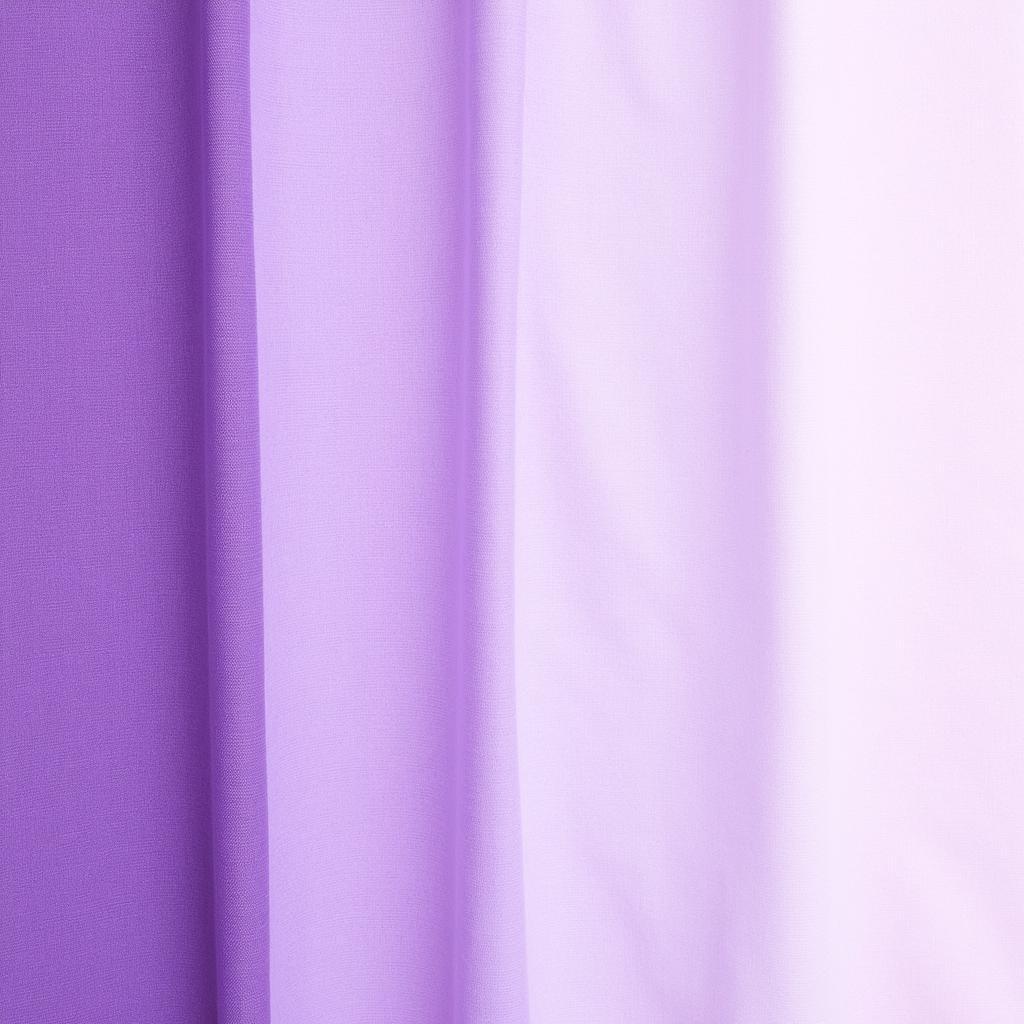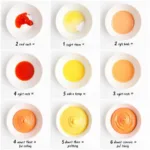Purple, a color often associated with royalty and mystery, is a popular choice for everything from hair dye to home decor. But one question often arises: what color does purple fade to? The answer isn’t always straightforward, as several factors influence the fading process.
Understanding how purple fades involves knowing a bit about color theory. Purple isn’t a primary color; it’s created by mixing red and blue. Therefore, as purple fades, it often leans towards one of its parent colors, depending on the specific shade of purple and the materials involved. For example, a vibrant violet might fade to a softer lavender, while a deep indigo might shift towards a muted blue. The fading process is a gradual transition, not a sudden shift. Various factors contribute to how quickly and to what color purple fades.
Factors Affecting Purple Fading
Several elements influence how purple fades, including the type of dye or pigment used, the material it’s applied to, and exposure to environmental factors. Sunlight is a major culprit in color fading, particularly for fabrics and dyed materials. UV rays can break down the chemical bonds in pigments, causing the color to lose its vibrancy. Washing frequency and the type of detergent used can also affect fading, especially for clothing. Similarly, heat can accelerate the fading process.
 Purple Fabric Fading Over Time
Purple Fabric Fading Over Time
For hair dye, the specific shade of purple, the hair’s natural color, and the type of hair care products used all play a role in how the color fades. For instance, lighter shades of purple tend to fade faster than darker ones. Similarly, hair that has been bleached or treated may hold color differently than untreated hair. Using color-safe shampoos and conditioners can help preserve the vibrancy of purple hair color. For more information on how purple fades in hair specifically, you can visit what color does purple fade to in hair.
Common Fade Colors for Purple
While the exact outcome varies, some common fade colors for purple include lavender, lilac, blue, pink, and even gray or beige. The original shade of purple significantly impacts the resulting fade color. A reddish-purple might fade to pink, while a bluish-purple might fade to a periwinkle or light blue. The material also plays a role. For example, purple paint on a wall might fade to a lighter tint of the original color, while purple fabric might fade to a more muted, desaturated hue.
How to Minimize Purple Fading
There are steps you can take to minimize purple fading, regardless of the material. Protecting items from direct sunlight is crucial. For fabrics, washing in cold water with gentle detergents and avoiding harsh chemicals can help preserve color. For hair, using color-safe products and minimizing heat styling can help maintain the vibrancy of purple dye. Understanding the factors that contribute to fading allows you to take preventative measures. If you’re curious about how fast purple hair color fades, check out does purple hair color fade fast.
What Happens When Purple Fades on Different Materials?
Fabrics
Purple fabrics often fade to softer shades of lavender, lilac, or even gray.
Paint
Purple paint may lighten to a pastel tint of the original color or shift towards blue or red undertones.
Hair
Purple hair dye often fades to pastel shades of pink, lavender, or blue, depending on the initial shade and the individual’s hair color.
“Fading is a natural process for most colors, and purple is no exception,” says renowned color specialist, Anya Sharma. “Understanding the factors that influence fading empowers you to make informed choices and take steps to preserve your desired shade for as long as possible.”
Conclusion
So, what color does purple fade to? The answer depends on a variety of factors, but by understanding these influences and taking proactive steps, you can anticipate and even control the fading process. Whether you’re dyeing your hair, painting your walls, or choosing a purple garment, knowing how this captivating color evolves over time can help you maintain its beauty and enjoy its transformation. If you’re curious about washing white shirts with colors, you might find this article helpful: can i wash white shirts with colors. For leather enthusiasts wondering about the color cognac, you can explore what is the color cognac in a leather. And for those interested in achieving a dirty blonde hair color, check out how to get a dirty blonde hair color.
FAQs
- Does all purple fade to the same color? No, the fading color depends on the original shade, the material, and environmental factors.
- How can I prevent purple clothes from fading? Wash them in cold water with gentle detergent and avoid direct sunlight.
- Does purple hair always fade to pink? Not always, it can fade to lavender, blue, or even gray depending on the initial shade.
- Why does sunlight cause fading? UV rays break down the chemical bonds in pigments, causing color loss.
- Can I restore faded purple? Sometimes, using color refreshers or re-dyeing can help revive the color.
- How fast does purple fade in sunlight? This depends on the intensity of the sunlight and the type of material.
- Is there a fade-resistant purple dye? Some dyes are formulated to be more resistant to fading than others.
Need assistance? Contact us at Phone Number: 0373298888, Email: [email protected] or visit our address: 86 Cau Giay, Hanoi. We have a 24/7 customer support team.
